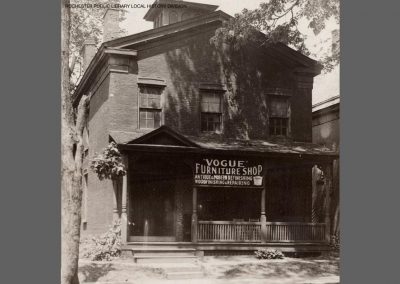Radical Black Activists And John Brown
Douglass and Brown
Douglass met Brown for the first time in 1847 in Springfield, Massachusetts.
Later, when reflecting on this meeting, Douglass stated: “I have talked with many men, but I remember none who seemed so deeply excited upon the subject of slavery as he. He would walk the room in agitation at the mention of the word” [1].
Douglass, as a Garrisonian Abolitionist, advocated for the non-violent overthrow of slavery via moral suasion and legal legislation.
However, Douglass “realized he would have to take a different approach.” This shift in thinking “may have come in 1847 after he met Brown in Springfield, Massachusetts. Douglass recalled that he had become less hopeful about the peaceful abolition of slavery and more impressed by Brown’s convictions” [2].
Radical antislavery activists, Garnet and Loguen, had urged Douglass to meet with Brown, and although it is likely that Douglass became more militant after meeting Brown, it is important to note that Brown “himself was influenced by black men at least as militant as himself.” This highlights the interconnected nature of radical abolitionist politics [3].
Throughout this period, both Brown and Douglass “began to spread the seeds of violent dissent.” Throughout the 1850s, Brown became increasingly militant, helping enslaved peoples escape from bondage and fighting enslavers during the Bleeding Kansas period [4].
In the late 1850s, Douglass and Brown continued to plan and work together. Brown stayed with Douglass at his home in Rochester.
He kept in touch with Douglass after leaving the fighting in Kansas and surrounding regions. Brown stayed with the Douglass family for three weeks beginning on January 27, 1857. It is here that Brown spent his time writing letters, as well as drafting a “Provisional Constitution and Ordinances for the People of the United States” [5].
During his stay with the Douglasses, Brown also discussed his beliefs with him, “making a listener of one who was generally a speaker.” From Douglass’s home, Brown wrote to many of his radical peers, including Garnet and Delany [6].
In order to conceal his identity, Brown went by the pseudonym “N. (or Nelson) Hawkins, in care of Frederick Douglass.” In lieu of that, Brown instructed his correspondents to “send their letters in a sealed envelope inside another envelope addressed to Douglass.” To further shroud himself in secrecy, Brown “engaged Charles Remond Douglass, thirteen-year-old son of his host,” to “post his letters and pick up his incoming mail” [7].
Working with Brown while he stayed at the Douglass home was a family affair. Anna Murray Douglass, “for over a month hosted Brown while he sought refuge from the authorities regarding his acts in Missouri.” During his three-week stay there, Murray Douglass most likely engaged in political discussions with Brown [8].
Douglass, like Garnet, did not attend the Chatham Convention or participate in the Harpers Ferry Raid. In a last-ditch effort to get Douglass to support and join him in the raid, Brown met with him, J.H. Kagi, and Shields Green, a self-liberated person, “on Saturday and Sunday, August 16 and 17, in a deserted quarry near Chambersburg, Pennsylvania.”
Brown pleaded with Douglass: “Come with me, Douglass. I will protect you with my life. When the bees begin to swarm, I’ll need you to hive them” [9].
Douglass did not budge and refused to accompany Brown and his men to Harpers Ferry, but Shields Green fought and died in the raid [10].
Even though Douglass did not physically participate in the Harpers Ferry Raid, it would not have been possible without the planning that occurred in the Douglass home in 1857 and 1858.
References
[1] Bennett, Lerone Jr. Pioneers in Protest. University of Michigan Press, 1969, p. 168.
[2] Jackson, Kellie Carter. Force And Freedom: Black Abolitionists and the Politics of Violence. University of Pennsylvania Press, 2020, p. 43.
[3] Toledo, Gregory. The Hanging Of Old Brown: A Story Of Slaves, Statesmen, And Redemption. Praeger, 2002, p. 75.
[4] Jackson 43.
[5] Quarles 38-39.
[6] Quarles 39.
[7] Quarles 39.
[8] Jackson 116.
[9] Bennett 172.
[10] Bennett 172.





